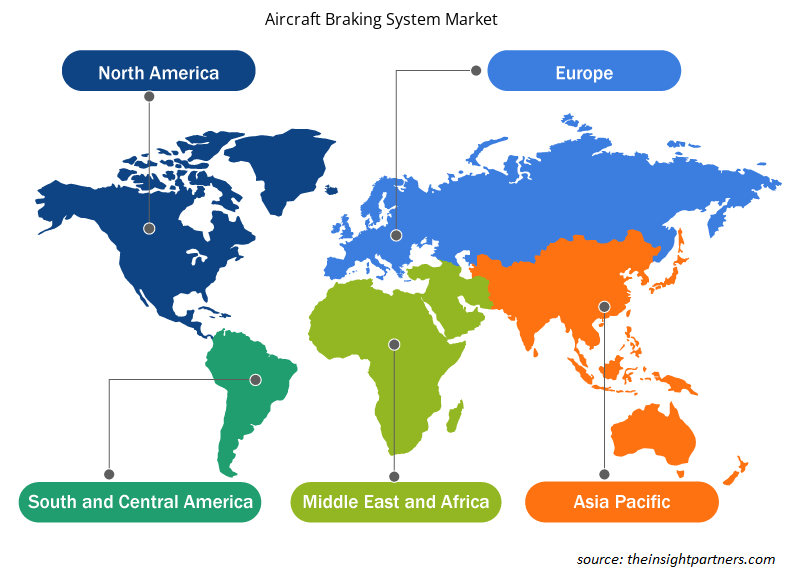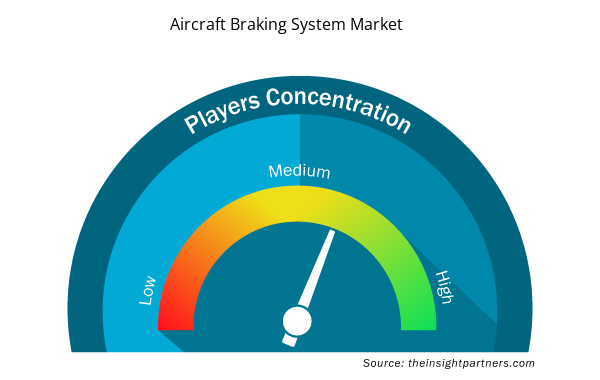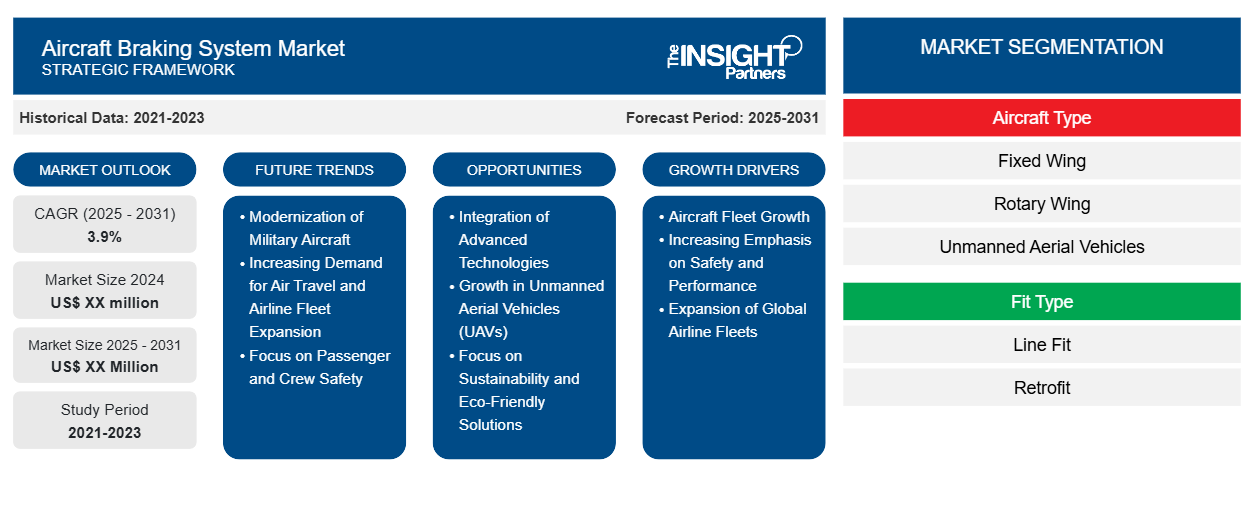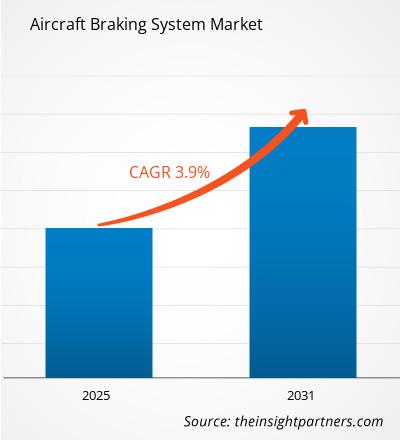Le marché des systèmes de freinage des avions devrait enregistrer un TCAC de 3,9 % de 2023 à 2031, avec une taille de marché passant de XX millions USD en 2023 à XX millions USD d'ici 2031.
Le rapport est segmenté par type d'aéronef (voilure fixe, voilure tournante, véhicules aériens sans pilote) ; type d'ajustement (montage en ligne, modernisation) ; actionnement (frein assisté, frein assisté, frein indépendant) ; composant (disques de frein, boîtier de frein, vannes, actionneurs, accumulateur, électronique, autres). L'analyse globale est ensuite décomposée au niveau régional et par principaux pays. Le rapport offre la valeur en USD pour l'analyse et les segments ci-dessus.
Objectif du rapport
Le rapport sur le marché des systèmes de freinage des avions de The Insight Partners vise à décrire le paysage actuel et la croissance future, les principaux facteurs moteurs, les défis et les opportunités. Cela fournira des informations à diverses parties prenantes commerciales, telles que :
- Fournisseurs/fabricants de technologie : pour comprendre l’évolution de la dynamique du marché et connaître les opportunités de croissance potentielles, leur permettant de prendre des décisions stratégiques éclairées.
- Investisseurs : Effectuer une analyse complète des tendances concernant le taux de croissance du marché, les projections financières du marché et les opportunités qui existent tout au long de la chaîne de valeur.
- Organismes de réglementation : Réglementer les politiques et surveiller les activités du marché dans le but de minimiser les abus, de préserver la confiance des investisseurs et de maintenir l’intégrité et la stabilité du marché.
Segmentation du marché des systèmes de freinage pour avions
Type d'avion
- Aile fixe
- Aile tournante
- Véhicules aériens sans pilote
Type d'ajustement
- Ajustement de la ligne
- Rénovation
Actionnement
- Frein électrique
- Freinage renforcé
- Frein indépendant
Composant
- Disques de frein
- Boîtier de frein
- Vannes
- Actionneurs
- Accumulateur
- Électronique
- Autres
Composant
- Disques de frein
- Boîtier de frein
- Vannes
- Actionneurs
- Accumulateur
- Électronique
- Autres
Personnalisez ce rapport en fonction de vos besoins
Vous bénéficierez d'une personnalisation gratuite de n'importe quel rapport, y compris de certaines parties de ce rapport, d'une analyse au niveau des pays, d'un pack de données Excel, ainsi que de superbes offres et réductions pour les start-ups et les universités.
- Obtenez les principales tendances clés du marché de ce rapport.Cet échantillon GRATUIT comprendra une analyse de données, allant des tendances du marché aux estimations et prévisions.
Facteurs de croissance du marché des systèmes de freinage des avions
- Croissance de la flotte d'avions : L'augmentation de la flotte d'avions commerciaux et militaires grâce aux achats est l'un des principaux facteurs propulsant la croissance du marché des systèmes de freinage des avions.
- L'importance croissante accordée à la sécurité et aux performances : L'un des principaux moteurs du marché des systèmes de freinage des avions est l'importance croissante accordée à la sécurité et aux performances dans les opérations aériennes. Les compagnies aériennes et les constructeurs accordant la priorité à la sécurité des passagers et de l'équipage pendant les phases critiques telles que l'atterrissage, le décollage et le roulage, la demande de systèmes de freinage avancés offrant une fiabilité et des performances accrues est en hausse. Cette tendance pousse les fabricants à innover et à améliorer les technologies de freinage, ce qui crée un marché robuste pour des solutions de freinage sophistiquées répondant à des normes de sécurité strictes.
- Expansion des flottes aériennes mondiales : L'expansion des flottes aériennes mondiales est un autre facteur important pour le marché des systèmes de freinage des avions. Avec la demande croissante de transport aérien, les compagnies aériennes investissent dans de nouveaux avions pour répondre aux besoins croissants en matière de passagers et de fret. Cette croissance de la taille de la flotte nécessite la production et l'installation de systèmes de freinage avancés dans les nouveaux avions, ainsi que la maintenance et le remplacement des composants de freinage dans les flottes existantes. À mesure que les constructeurs aéronautiques augmentent leur production pour répondre à cette demande, le marché des systèmes de freinage devrait croître en conséquence
Tendances futures du marché des systèmes de freinage pour avions
- Modernisation des avions militaires : La modernisation des avions militaires entraîne également une demande de systèmes de freinage avancés. Alors que les budgets de défense augmentent à l'échelle mondiale, les forces militaires modernisent leurs flottes avec de nouvelles technologies qui nécessitent des systèmes de freinage robustes.
- Demande croissante de transport aérien et expansion de la flotte aérienne : La demande croissante de transport aérien et l'expansion subséquente de la flotte aérienne mondiale sont des facteurs majeurs du marché des systèmes de freinage des avions. À mesure que les compagnies aériennes acquièrent davantage d'avions pour répondre aux besoins croissants en matière de transport de passagers et de fret, la demande de systèmes de freinage fiables et avancés augmente en conséquence. Cette tendance est encore renforcée par l'introduction de nouveaux modèles d'avions et le remplacement de flottes plus anciennes, qui nécessitent l'installation de technologies de freinage de pointe.
- L'accent mis sur la sécurité des passagers et de l'équipage : L'accent accru mis par l'industrie aéronautique sur la sécurité des passagers et de l'équipage pendant les phases critiques du vol, telles que l'atterrissage, le décollage et le roulage, constitue un moteur important pour le marché des systèmes de freinage des avions. Les organismes de réglementation et les constructeurs aéronautiques mettent l'accent sur le développement et l'adoption de systèmes de freinage plus robustes, plus réactifs et plus fiables pour améliorer la sécurité globale et réduire les risques d'accident. Cette tendance entraîne des investissements dans des technologies de freinage avancées, notamment des systèmes de contrôle électronique des freins et des disques de frein à base de carbone, afin de répondre aux normes de sécurité strictes du secteur.
Opportunités de marché pour les systèmes de freinage des avions
- Intégration de technologies avancées : L'intégration de technologies avancées dans les systèmes de freinage des avions présente une opportunité significative de croissance du marché. Des innovations telles que les systèmes de contrôle électronique des freins, les systèmes antidérapants et les matériaux intelligents peuvent améliorer les performances et la fiabilité des systèmes de freinage. Alors que les fabricants cherchent à améliorer la sécurité et l'efficacité, le développement de ces technologies de freinage avancées peut conduire à de nouvelles offres de produits et à une augmentation des parts de marché pour les entreprises qui investissent dans la recherche et le développement.
- Croissance des véhicules aériens sans pilote (UAV) : L’adoption croissante des véhicules aériens sans pilote (UAV) dans divers secteurs, notamment les applications militaires, commerciales et civiles, crée une solide opportunité pour le marché des systèmes de freinage des avions. À mesure que les drones deviennent plus répandus, il existe un besoin croissant de systèmes de freinage spécialisés capables de répondre à leurs exigences opérationnelles uniques. Ce segment devrait connaître une accélération rapide, offrant aux fabricants la possibilité de développer des solutions de freinage sur mesure pour ce marché émergent.
- L'accent mis sur la durabilité et les solutions respectueuses de l'environnement : L'accent croissant mis par l'industrie aéronautique sur la durabilité et les solutions respectueuses de l'environnement offre une opportunité prometteuse pour le marché des systèmes de freinage des avions. Alors que les compagnies aériennes et les fabricants s'efforcent de réduire leur impact environnemental, il existe une demande pour des systèmes de freinage non seulement efficaces mais également fabriqués à partir de matériaux durables. Le développement de systèmes de freinage légers, recyclables et économes en énergie peut positionner favorablement les entreprises sur un marché qui accorde de plus en plus d'importance à la responsabilité environnementale, attirant ainsi des clients et des parties prenantes soucieux de l'environnement.
Aperçu régional du marché des systèmes de freinage des avions
Les tendances et facteurs régionaux influençant le marché des systèmes de freinage d’aéronefs tout au long de la période de prévision ont été expliqués en détail par les analystes d’Insight Partners. Cette section traite également des segments et de la géographie du marché des systèmes de freinage d’aéronefs en Amérique du Nord, en Europe, en Asie-Pacifique, au Moyen-Orient et en Afrique, ainsi qu’en Amérique du Sud et en Amérique centrale.

- Obtenez les données régionales spécifiques au marché des systèmes de freinage des avions
Portée du rapport sur le marché des systèmes de freinage des avions
| Attribut de rapport | Détails |
|---|---|
| Taille du marché en 2023 | XX millions de dollars américains |
| Taille du marché d'ici 2031 | XX millions de dollars américains |
| Taux de croissance annuel composé mondial (2023-2031) | 3,9% |
| Données historiques | 2021-2022 |
| Période de prévision | 2024-2031 |
| Segments couverts | Par type d'avion
|
| Régions et pays couverts | Amérique du Nord
|
| Leaders du marché et profils d'entreprises clés |
|
Densité des acteurs du marché des systèmes de freinage des avions : comprendre son impact sur la dynamique commerciale
Le marché des systèmes de freinage pour avions connaît une croissance rapide, tirée par la demande croissante des utilisateurs finaux en raison de facteurs tels que l'évolution des préférences des consommateurs, les avancées technologiques et une plus grande sensibilisation aux avantages du produit. À mesure que la demande augmente, les entreprises élargissent leurs offres, innovent pour répondre aux besoins des consommateurs et capitalisent sur les tendances émergentes, ce qui alimente davantage la croissance du marché.
La densité des acteurs du marché fait référence à la répartition des entreprises ou des sociétés opérant sur un marché ou un secteur particulier. Elle indique le nombre de concurrents (acteurs du marché) présents sur un marché donné par rapport à sa taille ou à sa valeur marchande totale.
Les principales entreprises opérant sur le marché des systèmes de freinage pour aéronefs sont :
- Béringer
- Grue Aéronautique et électronique
- Systèmes de trains d'atterrissage pour avions Grove Inc.
- Honeywell International Inc.
- Jay-Em Aérospatiale
Avis de non-responsabilité : les sociétés répertoriées ci-dessus ne sont pas classées dans un ordre particulier.

- Obtenez un aperçu des principaux acteurs du marché des systèmes de freinage des avions
Principaux arguments de vente
- Couverture complète : Le rapport couvre de manière exhaustive l’analyse des produits, des services, des types et des utilisateurs finaux du marché des systèmes de freinage des aéronefs, offrant un paysage holistique.
- Analyse d’experts : Le rapport est compilé sur la base d’une compréhension approfondie des experts et analystes du secteur.
- Informations à jour : Le rapport garantit la pertinence commerciale en raison de sa couverture des informations récentes et des tendances des données.
- Options de personnalisation : ce rapport peut être personnalisé pour répondre aux exigences spécifiques du client et s'adapter parfaitement aux stratégies commerciales.
Le rapport de recherche sur le marché des systèmes de freinage des avions peut donc aider à ouvrir la voie au décodage et à la compréhension du scénario de l’industrie et des perspectives de croissance. Bien qu’il puisse y avoir quelques préoccupations valables, les avantages globaux de ce rapport ont tendance à l’emporter sur les inconvénients.
- Analyse historique (2 ans), année de base, prévision (7 ans) avec TCAC
- Analyse PEST et SWO
- Taille du marché Valeur / Volume - Mondial, Régional, Pays
- Industrie et paysage concurrentiel
- Ensemble de données Excel



Report Coverage
Revenue forecast, Company Analysis, Industry landscape, Growth factors, and Trends

Segment Covered
This text is related
to segments covered.

Regional Scope
North America, Europe, Asia Pacific, Middle East & Africa, South & Central America

Country Scope
This text is related
to country scope.
Questions fréquemment posées
Some of the customization options available based on request are additional 3-5 company profiles and country-specific analysis of 3-5 countries of your choice. Customizations are to be requested/discussed before making final order confirmation, as our team would review the same and check the feasibility.
The report can be delivered in PDF/PPT format; we can also share excel dataset based on the request.
The major factors driving the aircraft braking system market are:
1. Aircraft Fleet Growth
2. Growing Aircraft MRO Sector
Some of the major trends driving the aircraft braking system market are:
1. Technological Innovations in Aircraft Brake Components
The Aircraft Braking System Market is estimated to witness a CAGR of 3.9% from 2023 to 2031
Trends and growth analysis reports related to Aerospace and Defense : READ MORE..
1. BERINGER
2. Crane Aerospace and Electronics
3. Grove Aircraft Landing Gear Systems Inc.
4. Honeywell International Inc.
5. Jay-Em Aerospace
6. Lufthansa Technik
7. MATCO mfg
8. Meggitt PLC
9. PARKER HANNIFIN CORP
10. Safran
The Insight Partners performs research in 4 major stages: Data Collection & Secondary Research, Primary Research, Data Analysis and Data Triangulation & Final Review.
- Data Collection and Secondary Research:
As a market research and consulting firm operating from a decade, we have published and advised several client across the globe. First step for any study will start with an assessment of currently available data and insights from existing reports. Further, historical and current market information is collected from Investor Presentations, Annual Reports, SEC Filings, etc., and other information related to company’s performance and market positioning are gathered from Paid Databases (Factiva, Hoovers, and Reuters) and various other publications available in public domain.
Several associations trade associates, technical forums, institutes, societies and organization are accessed to gain technical as well as market related insights through their publications such as research papers, blogs and press releases related to the studies are referred to get cues about the market. Further, white papers, journals, magazines, and other news articles published in last 3 years are scrutinized and analyzed to understand the current market trends.
- Primary Research:
The primarily interview analysis comprise of data obtained from industry participants interview and answers to survey questions gathered by in-house primary team.
For primary research, interviews are conducted with industry experts/CEOs/Marketing Managers/VPs/Subject Matter Experts from both demand and supply side to get a 360-degree view of the market. The primary team conducts several interviews based on the complexity of the markets to understand the various market trends and dynamics which makes research more credible and precise.
A typical research interview fulfils the following functions:
- Provides first-hand information on the market size, market trends, growth trends, competitive landscape, and outlook
- Validates and strengthens in-house secondary research findings
- Develops the analysis team’s expertise and market understanding
Primary research involves email interactions and telephone interviews for each market, category, segment, and sub-segment across geographies. The participants who typically take part in such a process include, but are not limited to:
- Industry participants: VPs, business development managers, market intelligence managers and national sales managers
- Outside experts: Valuation experts, research analysts and key opinion leaders specializing in the electronics and semiconductor industry.
Below is the breakup of our primary respondents by company, designation, and region:

Once we receive the confirmation from primary research sources or primary respondents, we finalize the base year market estimation and forecast the data as per the macroeconomic and microeconomic factors assessed during data collection.
- Data Analysis:
Once data is validated through both secondary as well as primary respondents, we finalize the market estimations by hypothesis formulation and factor analysis at regional and country level.
- Macro-Economic Factor Analysis:
We analyse macroeconomic indicators such the gross domestic product (GDP), increase in the demand for goods and services across industries, technological advancement, regional economic growth, governmental policies, the influence of COVID-19, PEST analysis, and other aspects. This analysis aids in setting benchmarks for various nations/regions and approximating market splits. Additionally, the general trend of the aforementioned components aid in determining the market's development possibilities.
- Country Level Data:
Various factors that are especially aligned to the country are taken into account to determine the market size for a certain area and country, including the presence of vendors, such as headquarters and offices, the country's GDP, demand patterns, and industry growth. To comprehend the market dynamics for the nation, a number of growth variables, inhibitors, application areas, and current market trends are researched. The aforementioned elements aid in determining the country's overall market's growth potential.
- Company Profile:
The “Table of Contents” is formulated by listing and analyzing more than 25 - 30 companies operating in the market ecosystem across geographies. However, we profile only 10 companies as a standard practice in our syndicate reports. These 10 companies comprise leading, emerging, and regional players. Nonetheless, our analysis is not restricted to the 10 listed companies, we also analyze other companies present in the market to develop a holistic view and understand the prevailing trends. The “Company Profiles” section in the report covers key facts, business description, products & services, financial information, SWOT analysis, and key developments. The financial information presented is extracted from the annual reports and official documents of the publicly listed companies. Upon collecting the information for the sections of respective companies, we verify them via various primary sources and then compile the data in respective company profiles. The company level information helps us in deriving the base number as well as in forecasting the market size.
- Developing Base Number:
Aggregation of sales statistics (2020-2022) and macro-economic factor, and other secondary and primary research insights are utilized to arrive at base number and related market shares for 2022. The data gaps are identified in this step and relevant market data is analyzed, collected from paid primary interviews or databases. On finalizing the base year market size, forecasts are developed on the basis of macro-economic, industry and market growth factors and company level analysis.
- Data Triangulation and Final Review:
The market findings and base year market size calculations are validated from supply as well as demand side. Demand side validations are based on macro-economic factor analysis and benchmarks for respective regions and countries. In case of supply side validations, revenues of major companies are estimated (in case not available) based on industry benchmark, approximate number of employees, product portfolio, and primary interviews revenues are gathered. Further revenue from target product/service segment is assessed to avoid overshooting of market statistics. In case of heavy deviations between supply and demand side values, all thes steps are repeated to achieve synchronization.
We follow an iterative model, wherein we share our research findings with Subject Matter Experts (SME’s) and Key Opinion Leaders (KOLs) until consensus view of the market is not formulated – this model negates any drastic deviation in the opinions of experts. Only validated and universally acceptable research findings are quoted in our reports.
We have important check points that we use to validate our research findings – which we call – data triangulation, where we validate the information, we generate from secondary sources with primary interviews and then we re-validate with our internal data bases and Subject matter experts. This comprehensive model enables us to deliver high quality, reliable data in shortest possible time.


 Obtenez un échantillon gratuit pour ce rapport
Obtenez un échantillon gratuit pour ce rapport